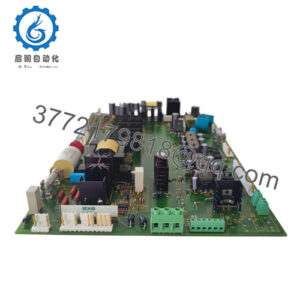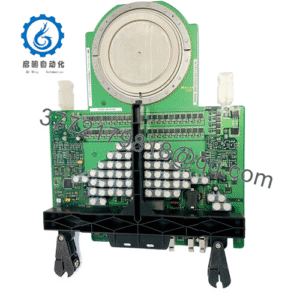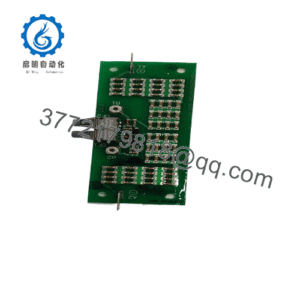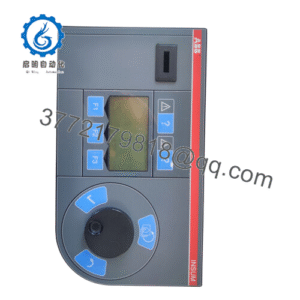Description
| Model | SB511 |
| Brand | ABB |
| Type | Industrial Signal Conditioning Module |
| Input Signal Types | Thermocouples (J, K, T, E), RTDs, 4-20mA, 0-10V |
| Output Signal | 4-20mA or 0-10V (configurable) |
| Power Supply | 24 V DC ± 10% |
| Isolation | 2.5kV galvanic isolation (input/output/power) |
| Operating Temperature | -25°C to 70°C (-13°F to 158°F) |
| Mounting | DIN rail mounting (35 mm) |
| Dimensions | 65 mm x 115 mm x 100 mm (W x H x D) |
| Weight | 280 grams |
| Accuracy | ±0.1% of full scale |
| Certifications | IEC 61010, UL 508, CSA C22.2, ATEX |
| Protection Features | Overvoltage protection, reverse polarity protection |
| Environmental Rating | IP20 |
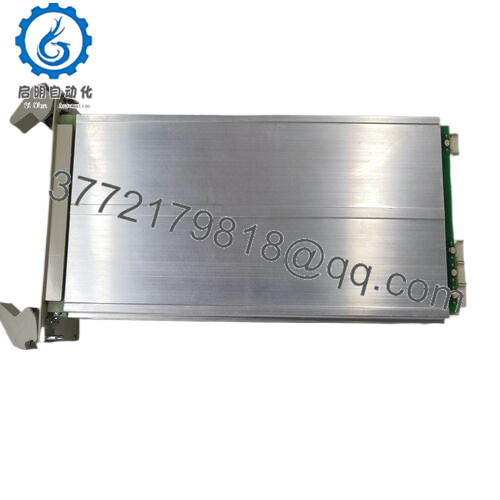
SB511
The SB511 is a high-performance signal conditioning module designed specifically for integration with ABB’s Symphony Plus and AC 800M control systems, providing essential signal processing between field sensors and I/O modules. As a critical interface component in control system architecture, this module conditions, isolates, and converts raw sensor signals into clean, standardized outputs that control systems can accurately process.
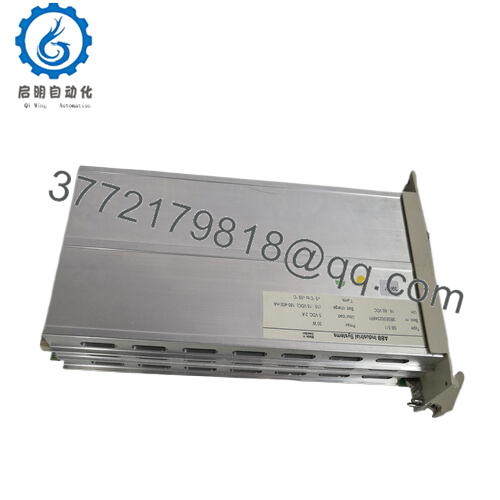
SB511
Its design focuses on delivering precise signal conditioning in a compact form factor, making it ideal for space-constrained control cabinets in power generation, oil and gas, and pharmaceutical industries. What distinguishes the SB511 is its combination of multi-signal support and robust isolation features, offering system integrators a flexible solution that enhances measurement accuracy while protecting sensitive control equipment from electrical hazards.
Main features and advantages:
A key strength of the SB511 is its versatile signal handling capability, supporting a wide range of input types including thermocouples (J, K, T, E types), RTDs (Pt100, Ni100), 4-20mA current signals, and 0-10V voltage signals. This flexibility allows the module to handle diverse sensing technologies without requiring multiple specialized conditioning units. The module incorporates advanced isolation technology (2.5kV galvanic isolation) between input, output, and power circuits, effectively eliminating ground loops and protecting control system components from voltage spikes and electrical noise common in industrial environments. Hardware-wise, the SB511 features a rugged plastic housing with conformal coating on circuit boards, ensuring reliable operation in temperatures ranging from -25°C to 70°C. Its compact design supports dense mounting in control cabinets, while status indicator LEDs provide instant visual feedback on signal status and module health.
Application areas:
In industrial process control environments, accurate signal transmission from field sensors to control systems is essential for maintaining precise process monitoring and regulation. Power plants, chemical processing facilities, and manufacturing lines often encounter challenges with raw sensor signals that require conditioning to eliminate noise, amplify weak signals, or convert between signal types. Whether processing thermocouple readings in high-temperature applications, stabilizing pressure transmitter signals in noisy environments, or isolating critical measurement data from electrical interference, engineers need reliable signal conditioning solutions. This is where the SB511 excels, serving as a compact yet robust signal conditioning module in industrial automation setups where signal integrity directly impacts measurement accuracy and process control. Used in industrial automation applications ranging from distributed control systems (DCS) to machine-level monitoring, the SB511 addresses key challenges such as noise reduction, signal isolation, and seamless integration with ABB’s control platforms.
Related products:
ABB SAFT112POW – Power supply unit that provides stable 24V DC power to the SB511 for consistent operation.
ABB RXIIK 4 – Analog input module that receives conditioned signals from the SB511 for process monitoring.
ABB SAFT181INF – Interface module that transmits data from SB511-conditioned signals to supervisory systems.
ABB RXTUG – Terminal unit that provides secure wiring connections for the SB511’s input and output signals.
ABB PM866K01 3BSE022496R1 – Processor module that uses SB511-conditioned data for control algorithms.
ABB SA9923A-E – Analog output module that receives setpoints based on SB511-processed measurements.
ABB CI854A 3BSE036411R1 – Communication module that integrates SB511 data into Profibus networks.
ABB SD831 3BSE036207R1 – Safety controller that uses SB511-conditioned signals in safety instrumented functions.
Installation and maintenance:
Before installing the SB511, ensure the mounting location provides protection from extreme temperatures, vibration, and direct exposure to moisture or corrosive substances. Verify that the module is positioned to minimize cable lengths between field sensors and the input terminals, reducing signal degradation. The SB511 should be connected to a clean 24V DC power supply with appropriate filtering, preferably from a redundant source like the SAFT112POW. Maintain a minimum clearance of 20 mm around the module to facilitate airflow and simplify wiring access. When connecting field sensors, use shielded cables with the shields properly grounded at both ends to maximize noise immunity, and route sensor wiring separately from high-voltage power cables.
For optimal maintenance of theSB511, implement a quarterly calibration schedule using traceable standards to ensure signal accuracy is maintained within specifications. Perform monthly visual inspections to check for loose connections, signs of corrosion, or damage to terminal blocks. Use the module’s status indicators to monitor operational health, with any fault indicators prompting immediate investigation. During scheduled maintenance windows, verify that isolation barriers are functioning correctly using insulation resistance testing equipment. Keep the module’s labeling clear and legible to ensure proper identification of input/output signals during troubleshooting. When replacing sensors or reconfiguring the system, recalibrate the SB511 to match the new sensor specifications.
Other ABB product models:
ABB 3BHE044249R0003
ABB 3BHE046836R0101
ABB 3BHE046836R0102 GFD563A102
ABB 3BHL000250P0002
ABB 3BHL000391P0101 5SHX1445H0001
ABB 3BHL000406P0009
ABB 3BHL000406P0103
ABB 3BHL000519P0001
ABB 3BHL000734P0003
ABB 3BHL000986P0006
ABB 3BHL001433P0001
ABB 3BHT300011R1
ABB 3BSE003816R1 SC520
ABB 3BSE004160R1 PFTL101A 0.5KN
ABB 3BSE004160R1 PFTL101A 0.5KN
ABB 3BSE004172R1 PFTL101A-2KN
ABB 3BSE004172R1 PFTL101A 2KN
ABB 3BSE018135R1
ABB 3BSE019050R200 PFTL301E-0.2kN
ABB 3BSE030928R1 SM810K01
ABB 3BSE042235R2
ABB 3BSE042236R1 PP865
ABB 3BSE042237R2 PP836A
ABB 3BSE042237R2 PP836A
ABB 3BSE042237R2 PP836A
ABB 3BSE043660R1 CI867K01
ABB 3BSE056899R1 CI873K01
ABB 3BSE066490R1
ABB 3BSE076939R1 PM866AK01
ABB 3BSE091722R1 LD 810HSE EX
ABB 3BSE092689R1
ABB 3BSE092689R1 CI867AK01
ABB 3BSE092978R1 PP881
ABB 3BUS208797-001

 WhatsApp: +86 16626708626
WhatsApp: +86 16626708626 Email:
Email:  Phone: +86 16626708626
Phone: +86 16626708626